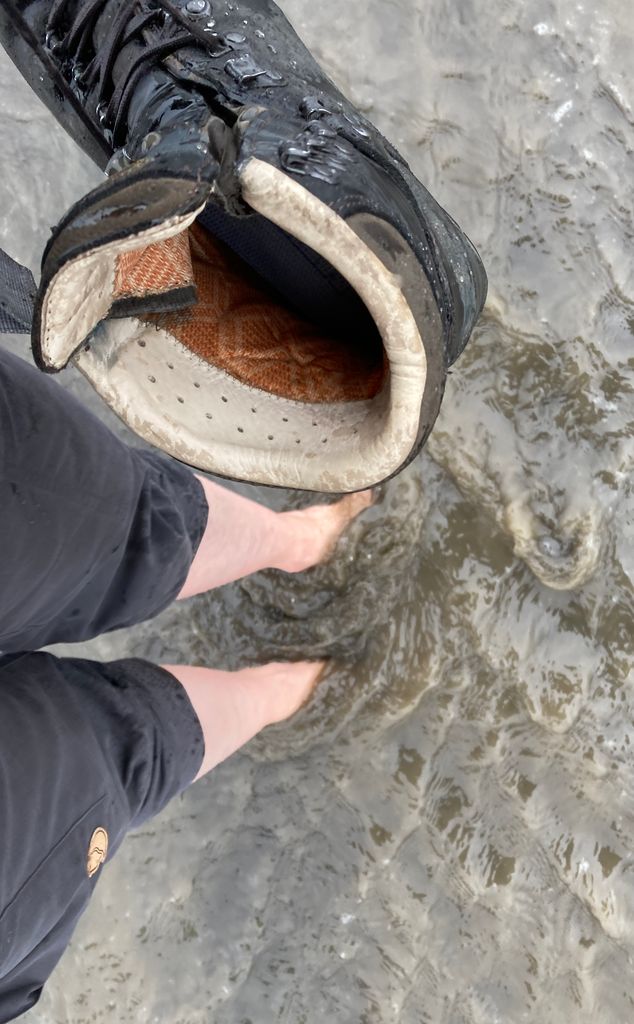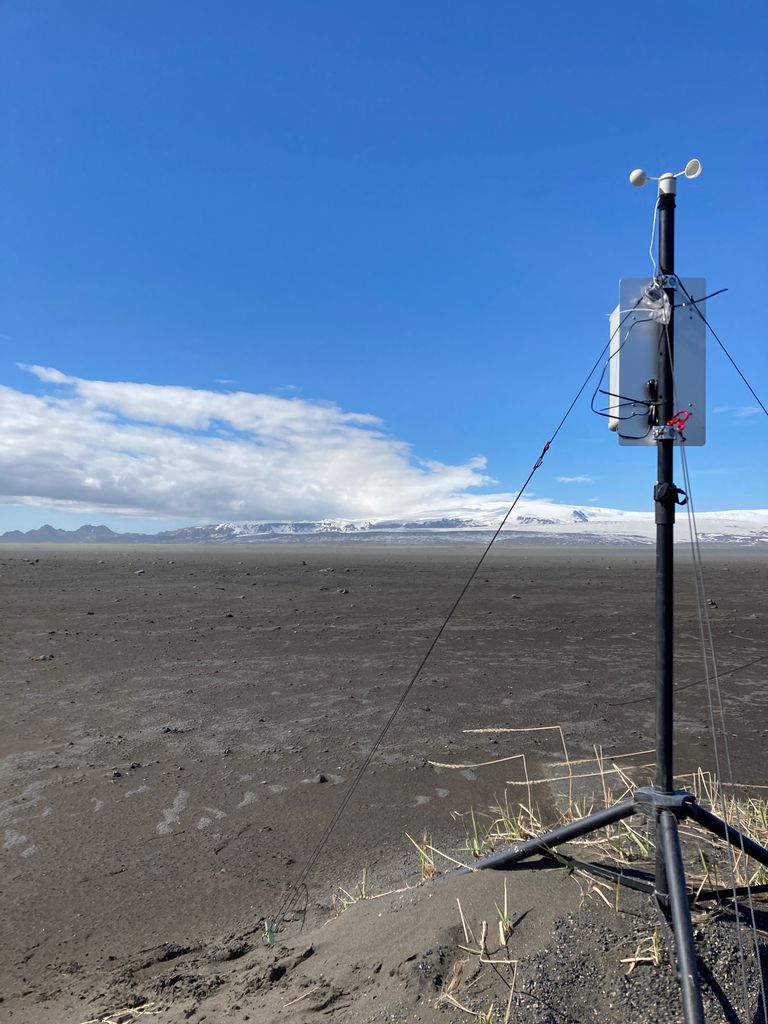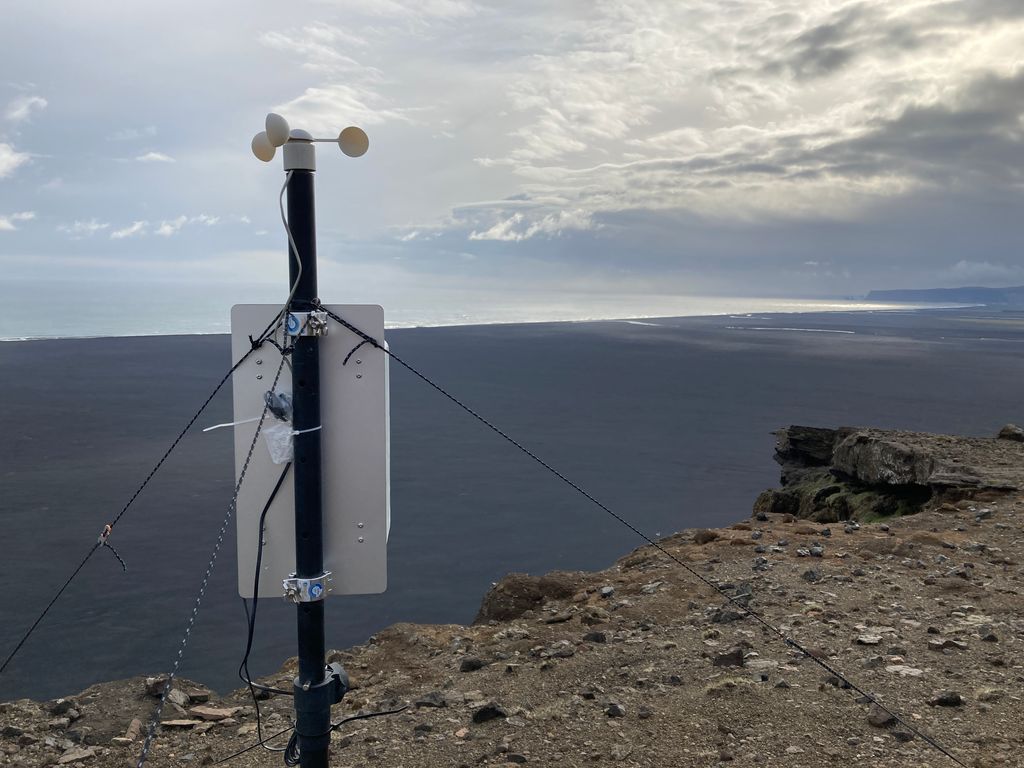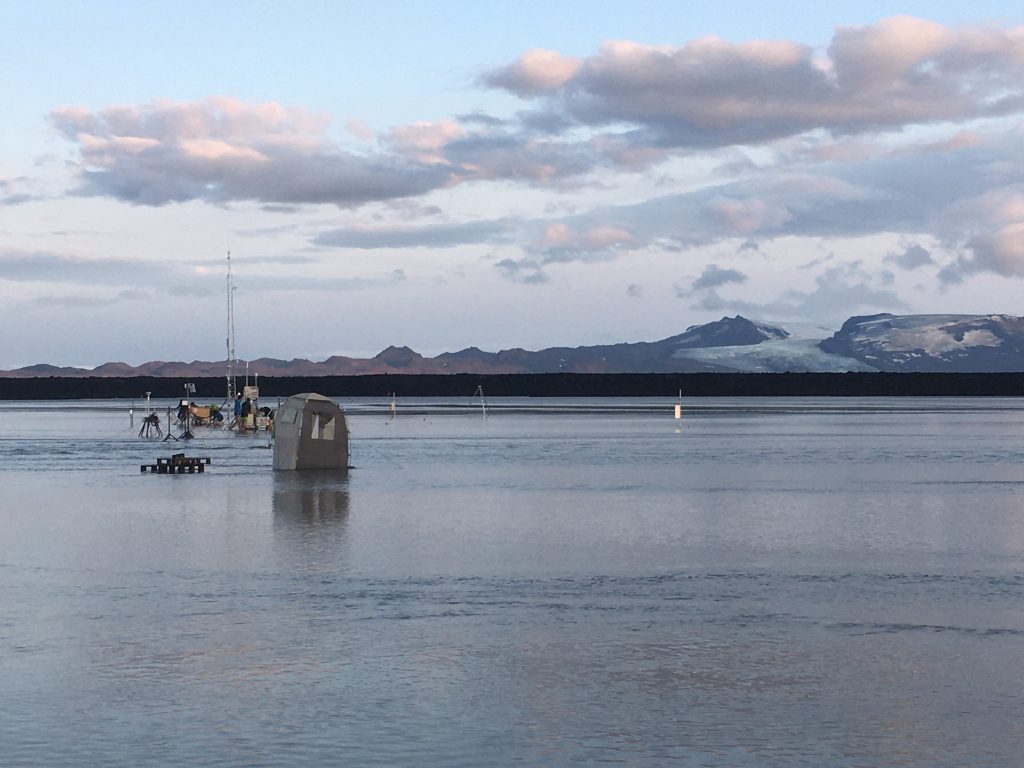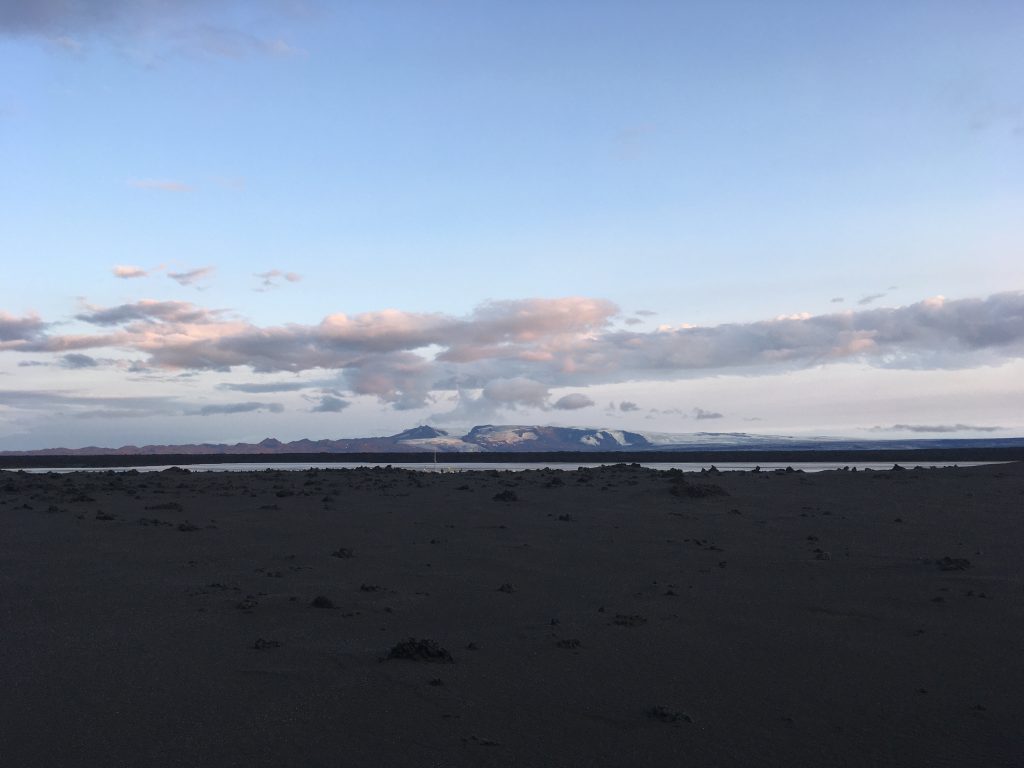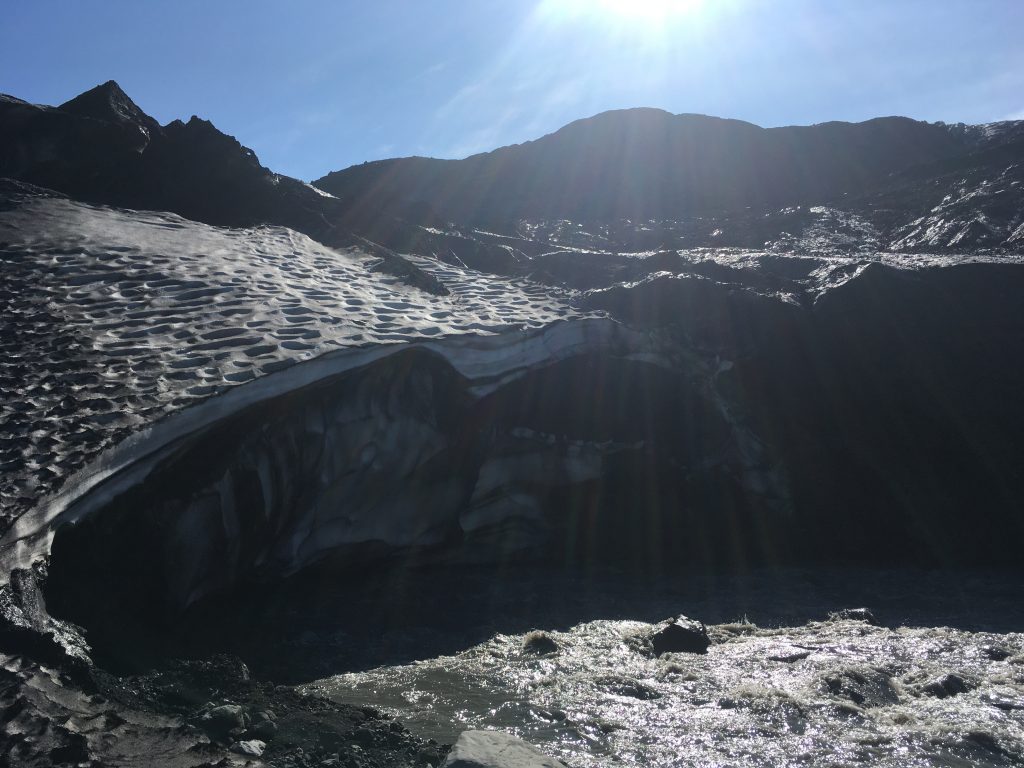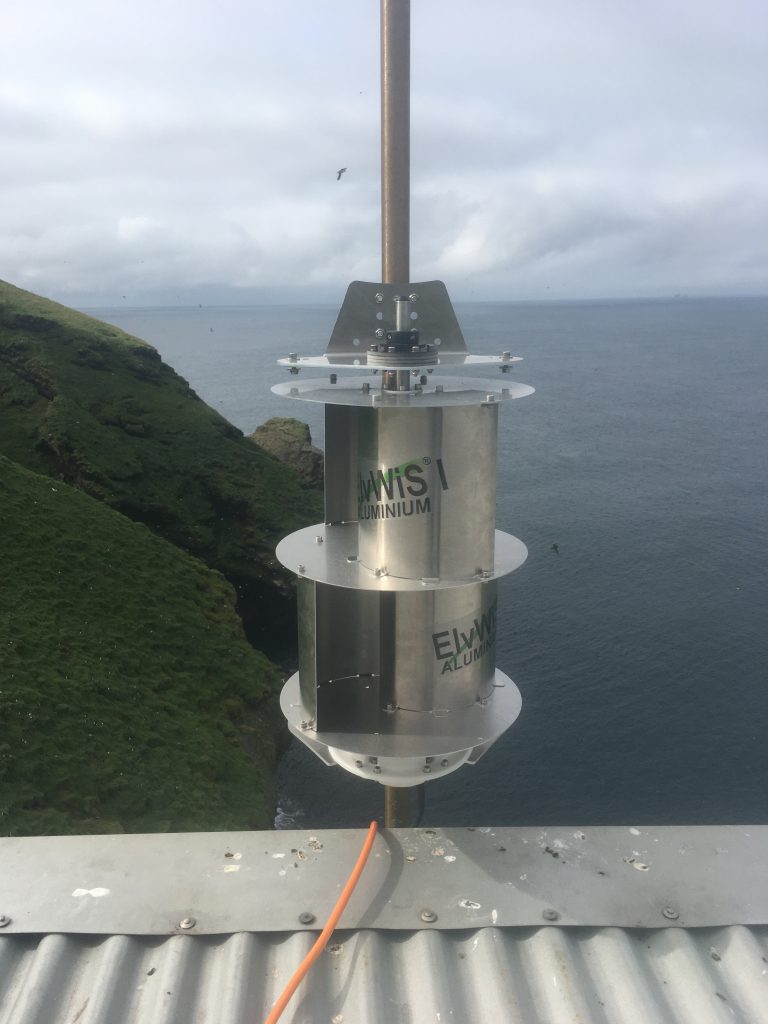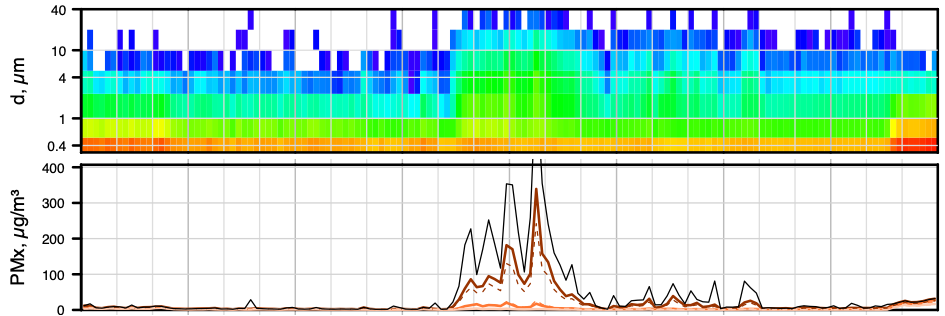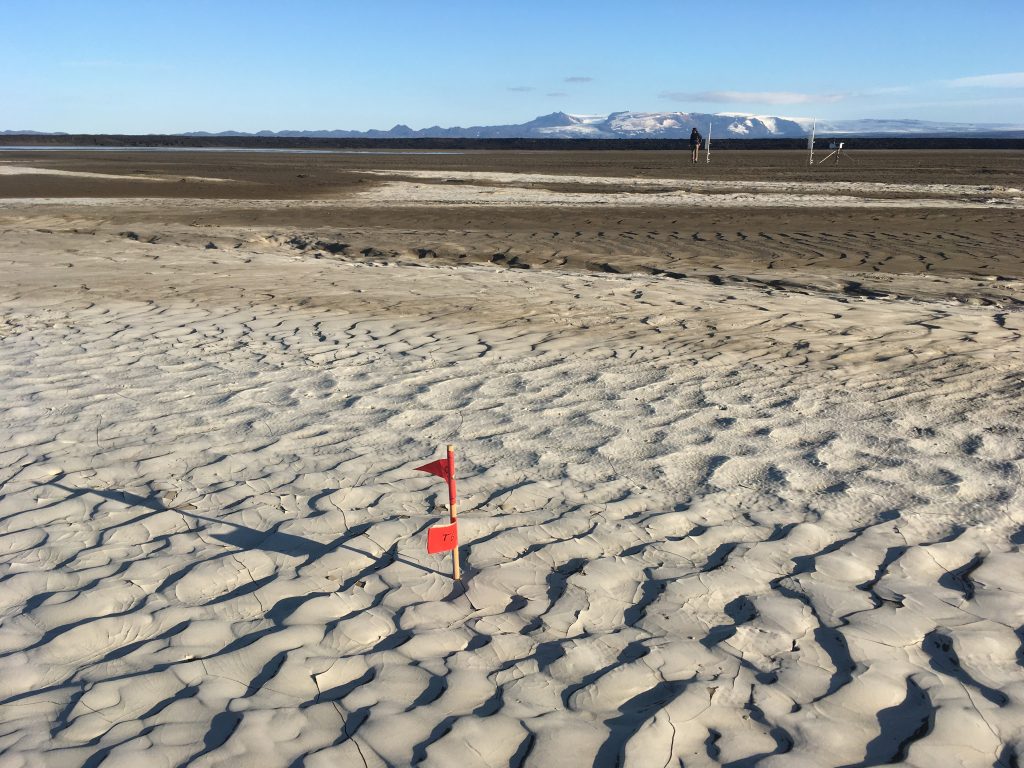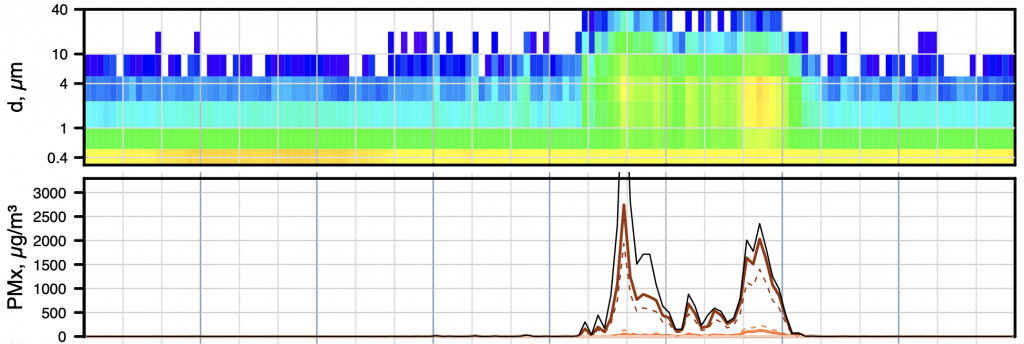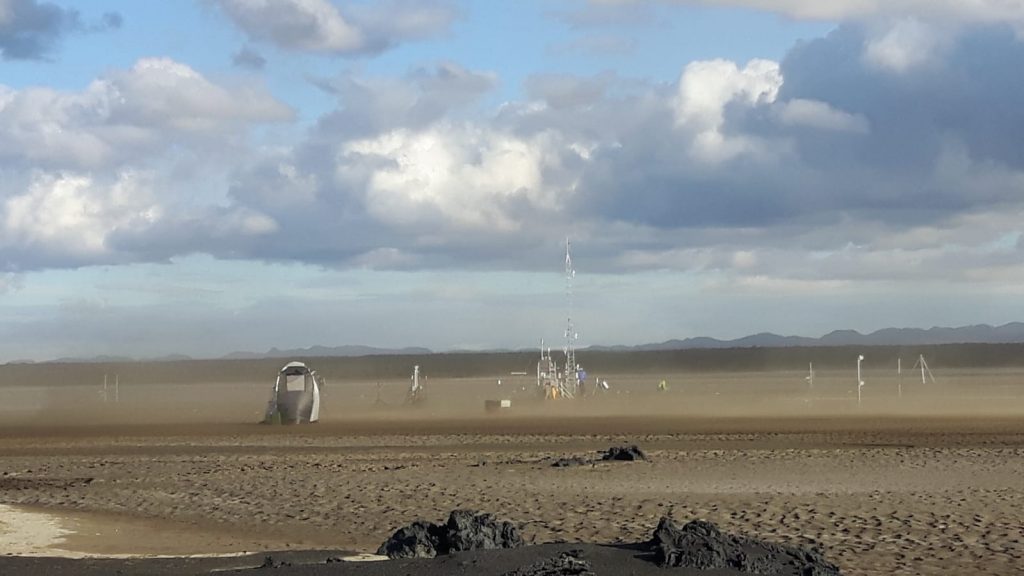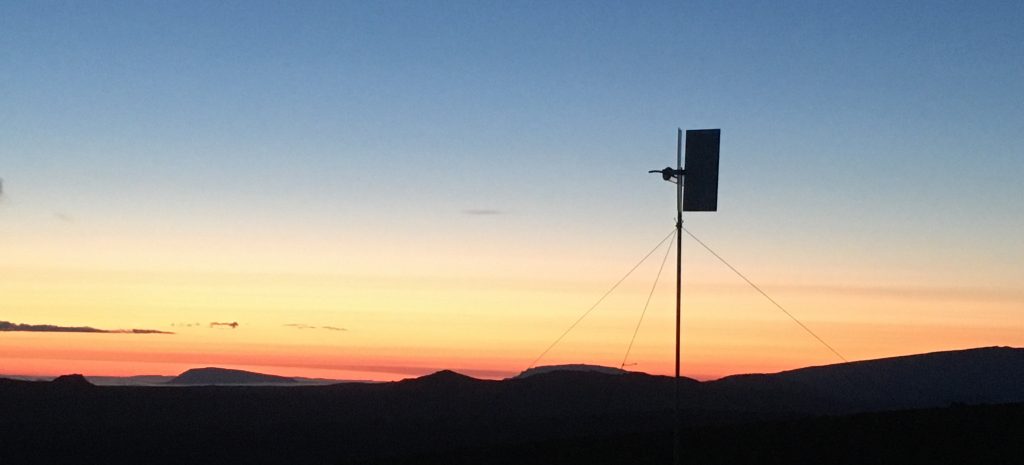It’s super windy! Well, not a big surprise as we are on Iceland. Nevertheless, it has an effect on our OPC-Tour as the beach part of the southbound tour is difficult to access. We definitely can feel abrasion by sand blasting – and our equipment shows some traces of wear as well.
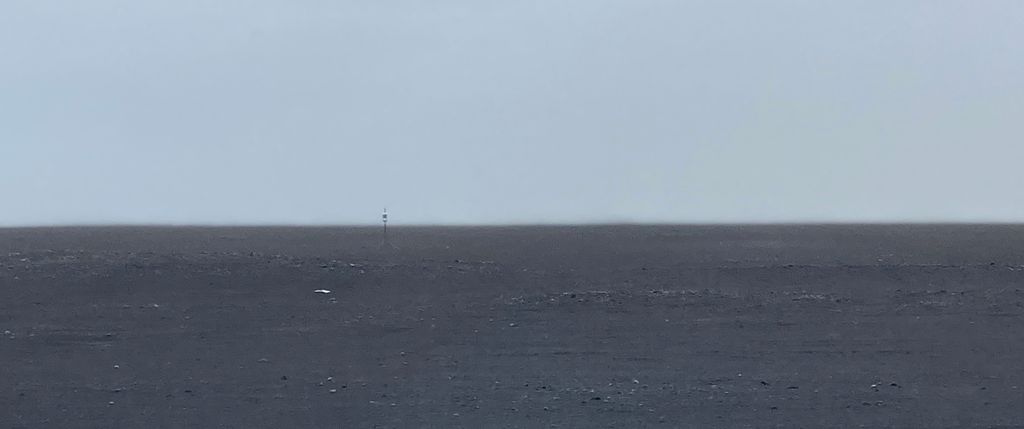
Whereas we were able to reach the beach station, but unfortunately it was not possible to climb up Hjörleifshöfði. The station there is too exposed to the strong gusts. Of course we are curious to know how strong the guts up there were, but very unfortunately, the data recording has some gaps – possibly due to weather (we experienced that before and at other stations too). Nevertheless, winds above 20 m/s on beach level, and the station on Hjörleifshöfði is about 200m above.
While we were not able to climb up Hjörleifshöfði and got sandblasted while servicing the beach station, we spend some thoughts on the diversity of the particles flying through the air: There was sand and dust suspended in the air as well as drizzle and rain. Curious to see how the data will reflect this …


